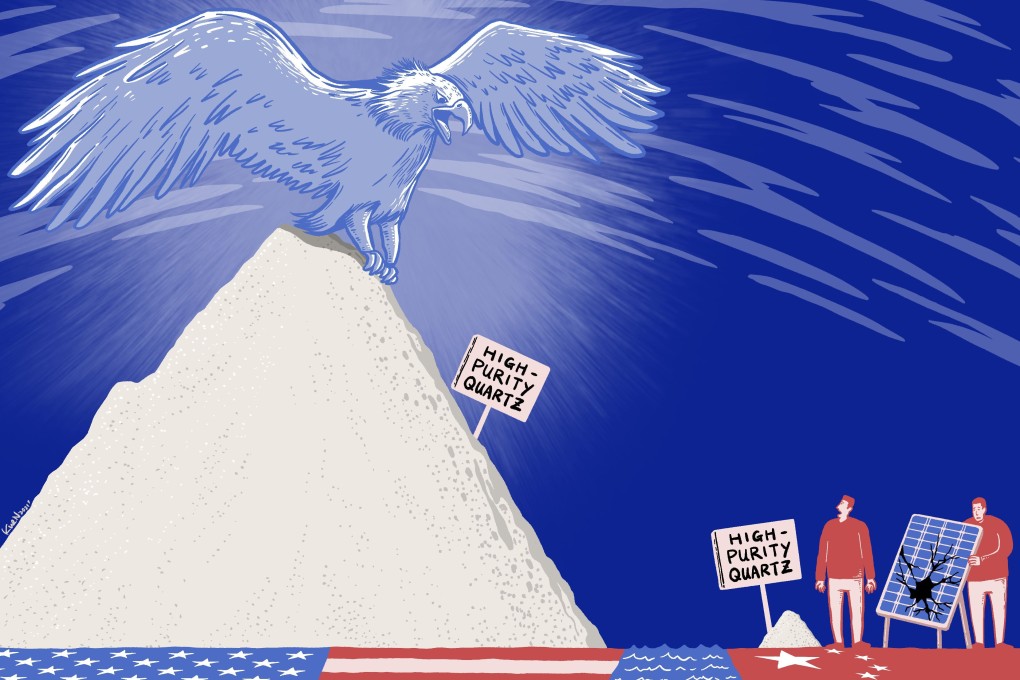A rare form of quartz is key to Xinjiang’s solar boom, and almost all of it is in the US
- The US has cracked down on the Chinese region’s solar industry, citing human rights, but hasn’t tried to leverage its own near monopoly in high-purity quartz
- The raw material is vital to the low-cost mass production of polysilicon, the prime ingredient in solar panels

Despite tariffs, rising production costs and human rights sanctions, it pumps out almost half of the world’s polysilicon, the shiny material that lets solar panels turn sunlight into electricity.
The region has almost everything it needs to do the job as fast and as cheaply as possible, from mines to factories to labour – except for one crucial raw material that exists in just a handful of places on Earth. And almost all of that raw material, industry experts say, happens to be sitting in the United States.
It is called high-purity quartz – a white, undiluted and highly unusual form of quartz, the most abundant rock on the Earth’s surface – and Chinese authorities have said openly that they do not have enough of it to sustain their own industry.

“Quartz resources in China are not optimistic, and there is a lack of high-quality deposits,” a China Securities report said last year. “At present, China’s high-purity quartz sand is still heavily dependent on imports, but the future of localisation is promising.”